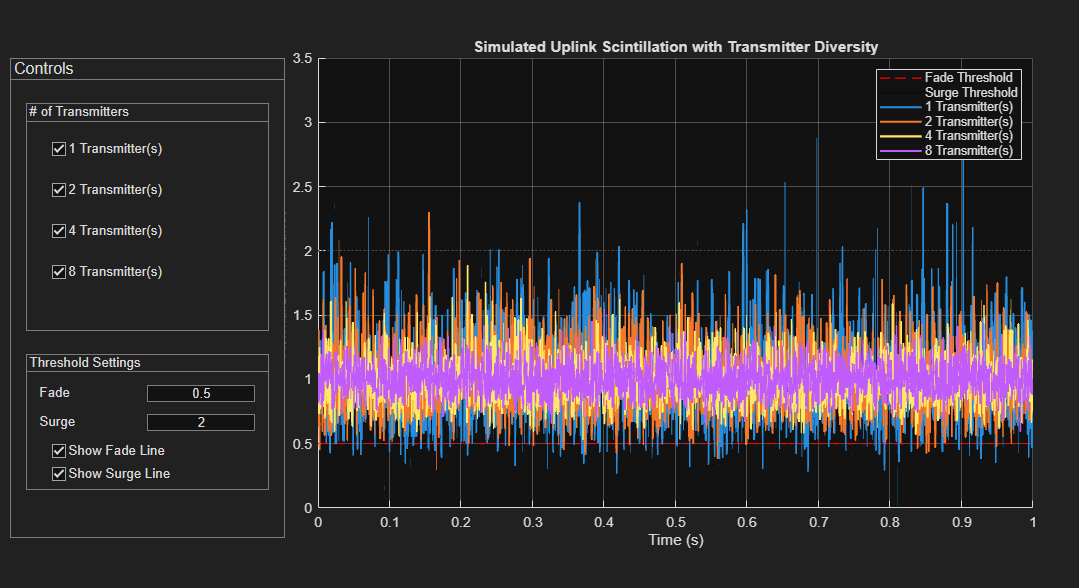Uplink Beacon Laser
As of now, the Beacon laser subsystem would follow a similar configuration to one of NASA’s beacon lasers used at OCTL to support the LLCD project: https://ao.jpl.nasa.gov/Publications/published_troberts2016.pdf. 4 lasers outputting a wavelength of 1064nm will be used with a Master Oscillator Power Amplifier (MOPA), each with custom mounting.
The rest of this segment is based on the MATLAB script that captures scintillation by normalized irradiance for an uplink laser. All formulas are based on the book "Laser Beam Scintillation with Applications" by Andrews, Phillips, and Hopen.

Scintillation Index and Irradiance Fluctuation Model
The simulation’s main objective is to calculate and model the scintillation index . This is the normalized variance of the irradiance. The MATLAB script first determines the point scintillation index, denoted as , for a single-transmitter path, which serves as the primary basis for this simulation. The value will be calculated using the Rytov variance and is generally considered valid across weak to strong turbulence conditions.
This script models scintillation using Gamma-Gamma Distribution, which is the product of two independent Gamma-distributed random variables that will be noted as and where
Large-scale turbulence can be represented as slow and broad variations in the temperatures and pressures of the environment. Those issues cause beam spread, slow fading events, and fluctuations of angle precision. Small-scale turbulence can be represented as rapid fluctuations in the refractive index that lead to speckles, which directly cause beam wander and scattering. The final normalized irradiance is calculated as the product of these two variables.
Model and Rytov Variance
For an uplink beacon laser, a spherical wave model was considered, as it accurately represents a laser beam transmitted from a small ground source to a Low Earth Orbit (LEO) satellite. The beam starts at the ground and immediately encounters the densest part of Earth’s atmosphere, where turbulence is at its peak. As the laser traverses to the satellite located in space (obviously), the atmospheric density decreases, as well as the effects of turbulence. In this case, the laser would experience strong divergence from the point source and propagate in all directions like a sphere. This logic could also be applied for justifying a plane-wave model for downlink simulations in which the order of turbulence is reversed. Then the laser beam would physically spread like a planar wave.
The Rytov variance quantifies the strength of the atmospheric turbulence. For an uplink spherical wave, the Rytov variance was found using the Hufnagel-Valley (H-V) atmospheric model for the refractive-index structure parameter, , along with the entire path length:
The Rytov variance itself is calculated using the integral of this model, while being weighted by the spherical
where is the result of the integral:
Dealing with Transmitter Diversity
The script also mainly focuses on reducing scintillation through transmitter diversity. Basically, multiple separated transmitters create uncorrelated paths independent of each other, which will reduce overall scintillation. This is modeled by:
To apply averaging correctly with the Gamma-Gamma distribution, the MATLAB script adjusts parameters, which are inversely related to the large-scale and small-scale irradiance variances.
The script that use the altered parameters to generate the Gamma-Gamma distribution with fewer irradiance based on the number of transmitter counts.